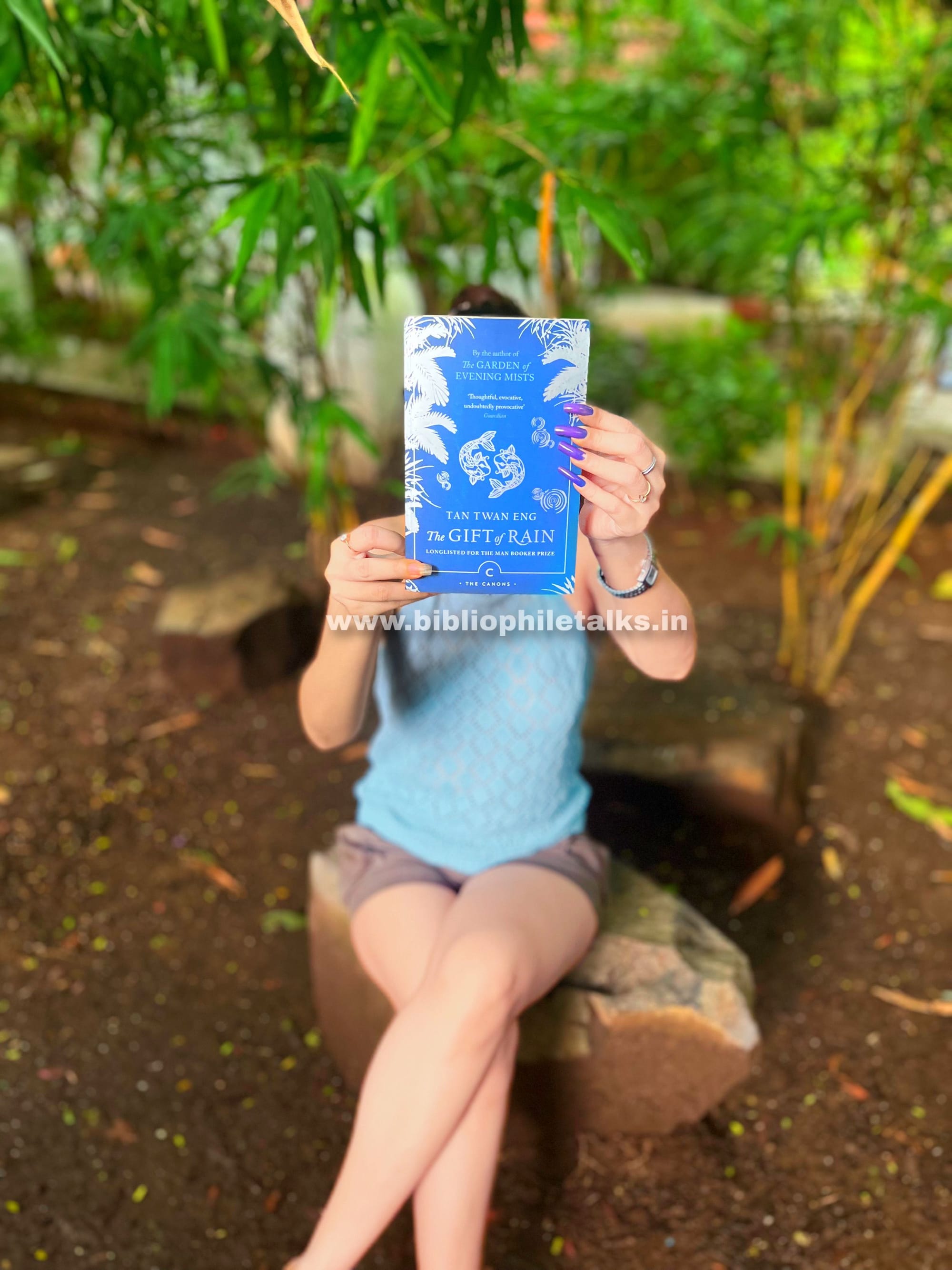THE GIFT OF RAIN

𝗧𝗵𝗲 𝗚𝗶𝗳𝘁 𝗢𝗳 𝗥𝗮𝗶𝗻
𝗕𝘆 𝗧𝗮𝗻 𝗧𝘄𝗮𝗻 𝗘𝗻𝗴
𝗣𝘂𝗯𝗹𝗶𝘀𝗵𝗲𝗿: 𝗖𝗼𝗮𝗻𝗼𝗻𝗴𝗮𝘁𝗲 𝗕𝗼𝗼𝗸𝘀
𝗣𝗮𝗽𝗲𝗿𝗯𝗮𝗰𝗸: 𝟓𝟏𝟐
𝗣𝘂𝗯𝗹𝗶𝘀𝗵𝗲𝗱: 𝟕𝐭𝐡 𝐉𝐮𝐥𝐲 𝟐𝟎𝟐𝟐
𝗚𝗲𝗻𝗿𝗲: 𝗛𝗶𝘀𝘁𝗼𝗿𝗶𝗰𝗮𝗹 𝗙𝗶𝗰𝘁𝗶𝗼𝗻
𝗠𝗮𝗹𝗮𝘆𝘀𝗶𝗮𝗻 𝗟𝗶𝘁𝗲𝗿𝗮𝘁𝘂𝗿𝗲
𝗥𝗲𝗮𝗱𝗶𝗻𝗴 𝗬𝗲𝗮𝗿: 𝟐𝟎𝟐𝟓
The Gift of Rain opens in Penang in 1939, introducing us to Philip Hutton, a young man of mixed Chinese and English heritage, who leads a life of privilege but feels estranged from both his Chinese and English cultures. The novel unfolds in poignant flashbacks, narrated by an elderly Philip as he reflects on a life shaped by war, loss, and complex loyalties.
As a teenager, Philip begins training in aikijutsu under the guidance of the enigmatic and esteemed Japanese master, Endo-san. What starts as a student-teacher relationship gradually deepens into a bond marked by mutual respect, love, and ultimately, heartbreaking betrayal. With the onset of the Japanese invasion of Malaya, Philip is forced to make life-altering choices—ones with no clear right or wrong—decisions that haunt him for decades to come. Much like the rain referenced in the prophecy he receives, his path is one of duality—both a blessing and a curse.
The author masterfully captures the turmoil of a young man caught between worlds. Through martial arts, Philip embarks on a journey of inner discovery, shedding layers of emotional reserve to discover the meaning of courage, trust, and love. Yet, the narrative also cautions that trust—when misplaced—can leave deep and lasting scars, especially during times when the lines between duty, loyalty, and morality blur beyond recognition. Philip’s odyssey is harrowing, but ultimately redemptive, as he confronts the darkness of war and emerges with hard-won wisdom.
Having read both The Gift of Rain and The Garden of Evening Mists this year, I found them to be deeply resonant companion pieces. Each explores themes of memory, cultural intersections, and wartime trauma, while weaving in the author’s evident reverence for Japanese traditions and martial arts. Both novels are rich in atmosphere and ethical complexity, and together, they cement Tan Twan Eng’s literary voice as one of quiet power and haunting beauty. Following these two works will indeed be a formidable challenge.
The language is simple yet elegant, and the narration is remarkably immersive—drawing the reader in with quiet intensity. While I found the pacing somewhat measured, it’s likely a personal observation, as the story soon captured my full attention. As the narrative unfolded, I found myself deeply engrossed, almost as though I had opened a delicate box filled with Philip’s memories—each chapter revealing the emotional weight of a life lived through extraordinary times.
The novel has an almost cinematic quality, allowing me to vividly envision each scene from Philip’s point of view. One of the most enriching aspects of the book is its seamless integration of Chinese, Japanese, and Malaysian cultural elements. These cultural nuances not only ground the story in its historical context but also add depth and texture, making the world within the book feel incredibly real.It’s a story that resonates with quiet beauty—one that’s hard to articulate in mere words. It truly needs to be experienced to be appreciated.
For those who enjoy historical fiction or are curious about venturing into Malaysian literature, this is an excellent starting point. While the pace may appear unhurried at first, I’d urge readers to stay with it for at least a few chapters. The narrative gradually builds and, before you know it, you’re completely absorbed. It is anything but dull—it is haunting, graceful, and profoundly moving.
My Rating:
5/5
NOTE: In this blog, the CONTENT and PICTURES are owned by Samayra Singh, and cannot be used or distributed without permission. Strict legal action will be taken against any infringement.